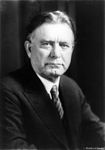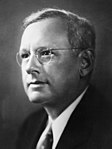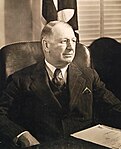| |||||||||||||||||||||||||
1,003 delegates to the Republican National Convention 502 (majority) votes needed to win | |||||||||||||||||||||||||
|---|---|---|---|---|---|---|---|---|---|---|---|---|---|---|---|---|---|---|---|---|---|---|---|---|---|
| |||||||||||||||||||||||||
 First place finishes by popular vote
| |||||||||||||||||||||||||
| |||||||||||||||||||||||||
From March 10 to May 19, 1936, voters of the Republican Party chose its nominee for president in the 1936 United States presidential election. The nominee was selected through a series of primary elections and caucuses culminating in the 1936 Republican National Convention held from June 9 to June 12, 1936, in Cleveland, Ohio.[1]
Although many candidates sought the Republican nomination, only two, Governor Alfred Landon and Senator William Borah, were considered to be serious candidates.[citation needed]
While favorite sons County Attorney Earl Warren of California, Governor Warren E. Green of South Dakota, and Stephen A. Day of Ohio won their respective primaries, the 70-year-old Borah, a well-known progressive and "insurgent," carried the Wisconsin, Nebraska, Pennsylvania, West Virginia, and Oregon primaries, while also performing quite strongly in Knox's Illinois and Green's South Dakota. However, the party machinery almost uniformly backed Landon, a wealthy businessman and centrist, who won primaries in Massachusetts and New Jersey and dominated in the caucuses and at state party conventions.
- ^ Kalb, Deborah (2016-02-19). Guide to U.S. Elections - Google Books. ISBN 9781483380353. Retrieved 2016-02-19.


